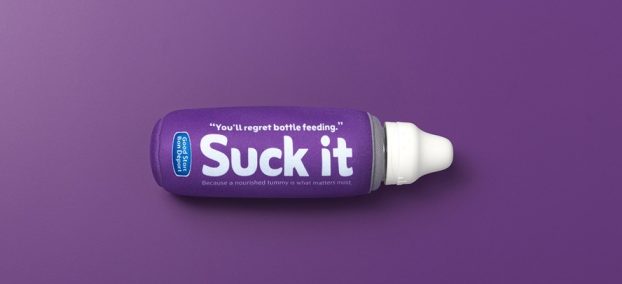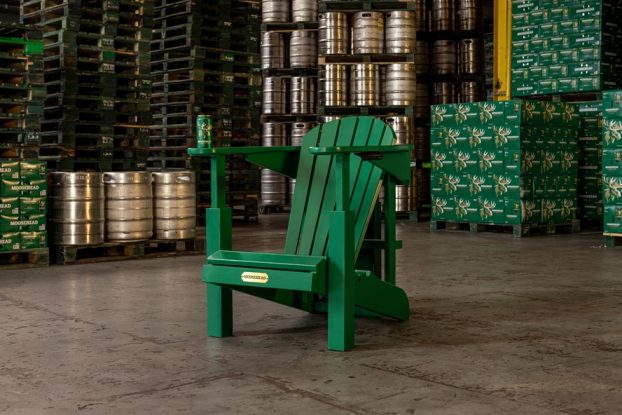Cramped aisles, long lineups and cluttered checkout counters – not exactly what you want from your friendly neighbourhood drugstore.
That, however, is what many consumers have come to expect when they visit Shoppers Drug Mart.
How to change that expectation? Simple: change the store.
Which is precisely what the 800-outlet drugstore chain is now in the process of doing. With the assistance of Toronto-based Design
Vision, Shoppers is giving a number of its stores across the country a drastic facelift, introducing new interior designs, new layouts and lighting, and new approaches to product presentation and customer service.
So far, three Toronto-area stores have been made over. And Chris Dawson, senior vice-president, business strategy for Shoppers, says there are plans to revamp another 24 outlets by early next year.
This process began two years ago. Faced with increasing competition – not just from other drugstores, but from mass retailers and food-and-drug combo stores as well – Shoppers set about researching its various customer segments, in the hope of better defining its role as a health products provider.
According to Dawson, the research delineated five different consumer segments, categorized according to their reasons for choosing a particular store.
There are, he explains, those who make their choice based on location, those who choose a store because it’s easy to navigate, and those who choose based on the availability of appropriate health care products and services. There are also cherry pickers, and shoppers who want a one-stop experience.
Shoppers chose to design stores that would cater to the first three segments.
Among the priorities for these consumers, Dawson says, are convenience and the opportunity to receive professional advice from in-store experts.
Accessibility is crucial to convenience, adds Magnus Clarke, vice-president of design with Design Vision.
‘One of the things that kept coming up [in research] was the ability to get in and out of stores quickly,’ he says. ‘Just about everything [in the old Shoppers format] had become an impediment to customer convenience.’
For the design team, the task was to understand the major impediments – both the physical obstacles and the other factors that heightened customer stress – and to find ways of eliminating them.
Widening the aisles (to accommodate strollers, among other things) is one important step in that direction. So is the introduction of lower shelving in service-heavy areas of the store, to improve the lines of sight.
There are also fewer floor displays cluttering up the aisles, and less space allocated to convenience items such as soft drinks. The checkout area has been tidied up too, with most of the impulse-buy items eliminated (although magazines are conveniently located nearby).
As for reducing customer stress, improved lighting was one of the keys, Clarke says.
Varied approaches to lighting help differentiate specific areas of the store. In the cosmetics department, for example, the majority of the lighting is indirect, with the products backlit by halogen lamps.
Of all the in-store departments, cosmetics is perhaps the most dramatically overhauled. Rather than have a ‘cosmetician’ behind the counter who sells only the prestige items (and steps out occasionally to help a customer), Shoppers has made the entire department open-sell – a format that is gaining increased currency in cosmetics retail.
Stephen Candib, vice-president of strategy with Design Vision, says this approach heightens the perception of Shoppers as a place where consumers can get objective advice on cosmetics.
Throughout the store, a new approach to colour prevails.
The chain’s traditional red is very aggressive, Candib says, and in the old-format stores it seems to assault the customer from all angles. Design Vision recommended something a little more calming.
The first step was to modify the exterior signage, with the addition of a subtle gray to the standard red and white. Each zone of the store has also been distinguished through use of a different colour – blue for professional products (to tie in with the chain’s blue HealthWatch logo), silver-gray for cosmetics, soft green for beauty and white for convenience products.
‘The typical colour balance is more natural,’ Candib says. Aisle signs and shelving unit headers are also colour-coded.
John Torella, retail analyst with Toronto-based J.C. Williams Group, says the new-look stores represent a step in the right direction for Shoppers.
Given an aging population whose members are increasingly responsible for their own health care, Torella says, it’s important that the chain move back to its roots – focusing on the provision of health care goods and services, and cutting back in areas such as convenience items.
In the future, access to home health care products is the factor that will make or break a drugstore, he says.
So far, all of the Shoppers Drug Mart pilot stores have been located in urban areas. For that reason, Torella says, it remains difficult to predict whether the concept will work in smaller markets.
Ultimately, the hope is to incorporate many of the design elements from the pilot stores throughout the Shoppers chain. That, however, doesn’t mean that all the stores will be identical. As Clarke explains, the format will vary in different locations depending on demographics.
There are, in fact, six different store concepts designed to address different demographic profiles. Each, Dawson says, will carry different products and focus on different product and service areas.
The six are: stores in office towers and major malls; stores in urban neighbourhoods; stores in suburban neighbourhoods; urban superstores; rural stores; and prescription centres.
The pilot stores now in development will represent a cross-section of these formats, Dawson says.
As yet, there are no plans to promote the new Shoppers stores nationally, since the makeover is still in its pilot stages. There will, however, be locally-based promotions for the stores, such as opening-week activities.
Also in this report:
– Contemporary by design: How Anne.x, Baskin Robbins and Swiss Chalet have managed to tailor their environments to the 21st century shopper p.B14
– World’s Biggest Bookstore touts utilitarian roots: Rather than renovate, this no-frills bookseller champions its distinct lack of ambience p.B16
– Zellers goes Truly private label p.B17























